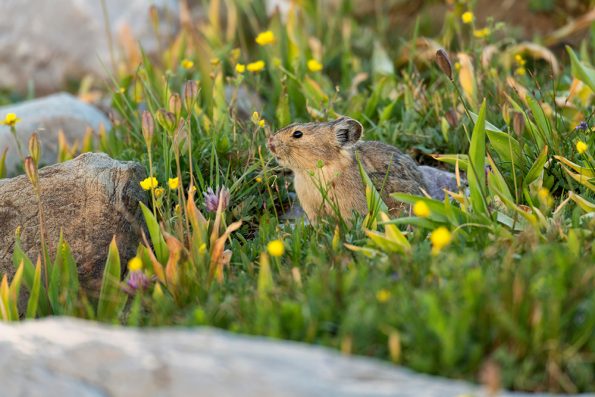American Pikas Could Be The First Species To Go Extinct Due To Climate Change

American pikas may resemble hamsters, but unlike the house pet, they can live out their entire lives in the wilderness. Though the American pika may be little, it is fierce. When it comes to survival, the pint-sized mammal is very resourceful.
These creatures have small, stout bodies that reach a size of no more than eight inches. They also have big, round ears and brown/black fur that helps with camouflage.
They are native to North America, making their homes in rocky, mountainous areas, and maintain a plant-based diet consisting of weeds, grasses, and wildflowers.
During the colder months, fewer plants grow in the mountains. To prepare for the winter, pikas will collect piles of plants in the summer and lay them out in the sun.
The heat of the sun dries out the plants so that they don’t become moldy. Then, the pikas will store the plants in their dens.
Since they don’t hibernate, their food supplies must last them through the winter. A pika can make up to 200 trips a day to gather grasses and wildflowers to bring back to their nests.
Aside from wildflowers, pikas will also gather poisonous plants as another way to prevent mold from growing in their food reserves.
The toxins in the plants will decay throughout the winter, which will make them edible to the pikas. By summer’s end, their stacks of vegetation can weigh up to 60 pounds.
Pikas are used to living in treacherous terrain, where most other mammals do not dare to venture. They protect themselves from predators, such as hawks, coyotes, and weasels, by forming colonies.

Tom – stock.adobe.com – illustrative purposes only
Living near other pikas allows them to send out a warning call to alert the group of danger. According to the National Park Service, their calls are much like the sound of squeaky toys.
While pikas do live in colonies, they are very territorial over their dens. They will often give off territorial calls to mark their spaces.
Today, American pikas are vulnerable to extinction due to climate change. Climate change has caused temperatures to rise in high mountain ecosystems. The pika has adapted to cool, moist environments, so they can die if exposed to temperatures at 79 degrees Fahrenheit or above.
Already, over a third of pikas have vanished from Oregon and Nevada, regions that they are known to frequent.
They could be the first species to go extinct because of climate change. Without help from humans to preserve their habitats, pikas may be at risk of disappearing forever.
If true crime defines your free time, this is for you: join Chip Chick’s True Crime Tribe
Sign up for Chip Chick’s newsletter and get stories like this delivered to your inbox.
More About:Animals